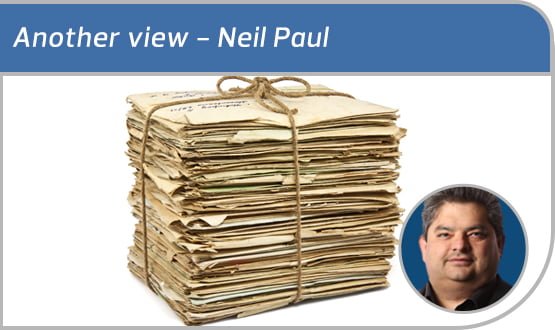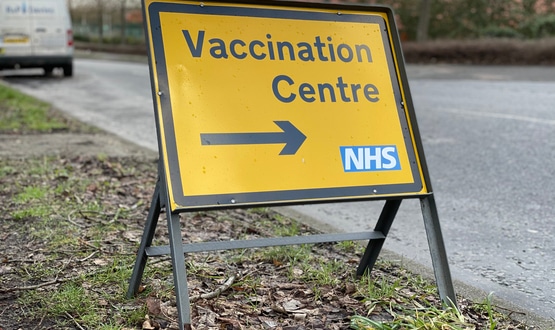Another view: of handling letters
- 18 October 2016

As a practice, we hired a pharmacist to deal with a load of medicines issues and take work load off the GPs. We did this five years ago, and it’s worked well.
Recently, there has been a national scheme encouraging practices to do the same by pump-priming the appointment.
Now, 14 local practices have a pharmacist. One GP told me the other day that his practice’s pharmacist had changed his life for the better. I could have said: “Told you so.”
While I’m naturally very pro GP, if I was to criticise my colleagues, then one of their collective faults – driven partly by the partnership model – is that they can fail to invest in innovation; and often rely too much on new pots of money when they do.
Admin assistants sound good
On a similar track, this weekend I saw a load of paper work for a new role called ‘a medical assistant’ that is going around. It’s an admin person who helps a GP.
Again, my surgery has been doing this for years. We call her a health care assistant. Ok, as GPs we don’t have one each, as the paperwork seems to suggest we should – that would be nice!
Also, our health care assistant doesn’t do everything the paperwork suggests a medical assistant should – although she will from tomorrow!
However, both jobs are about taking the slow admin tasks off a GP. The endless form filling that, even when automated, seems to take too long. The recording of data and codes that is needed but is not really part of the consultation.
Interestingly, I spent five years as a hospital junior doctor before switching to general practice and every consultant had a HCA type person in the room with them in every clinic. So why don’t GPs?
Getting ruthless with letters
Of course, having someone in the room to do the non-medical stuff is great; but why stop there? At the Emis National User Group I heard about a scheme very similar to the one I’ve been trying to setup locally (without much success).
Five practices in a town have combined their letter processing teams into one. For those that don’t know, GPs get copied into all sorts of rubbish from almost anyone who is seeing one of our patients.
This is a legacy of the gatekeeper role. Everyone wants access to the GP records; we are the central source. However, it means I read all sorts of rubbish all day, most of which says little of any value.
As a practice, we have been trying to weed out the rubbish and have been moderately successful. This project I’ve heard about has been ruthless.
They take out all the letters that say nothing. They take out letters that need action and pass them on to the right team/person to deal with: including the pharmacists mentioned above.
They reckon they have saved the average GP 40 minutes a day. That’s three to four more appointments each. Across five practices, that could be as many as 100 extra appointments a day – which is a lot of extra capacity.
Or, at a time when people are struggling to recruit GPs, and locums cost a fortune, it is money that could be invested into setting up the service.
Finding the IT to do it
Now, as stated, I’ve been trying to do the same locally, but I’ve been hitting brick walls. One of those walls has digital bricks.
As a GP federation, we are trying to standardise and harmonise service delivery, joining up for training and IT support. This is hard when it turns out that almost every practice seems to be on a different version of what should be core systems, and upgrading can be such a pain.
This gets harder for client-based systems, as the way these work makes collaborative working very difficult. This includes Docman. I used to be a big fan of Docman, but just recently I’ve had some real issues with the company.
The good news is that I have been shown their new systems and they could soon be back on top. Now, I should say I’m not being paid by them (though I’m available for consultancy work!) and this isn’t a review. What I’m going to say next is more a push to reinforce some of the ideas I left them with after my demo.
Docman 10 appears to move all the documents into the cloud, away from local servers, making cross practice working easier. At a stroke, it takes away the different version and updating issues; everyone is on the same software and it’s all done centrally.
The company appears to understand that hub working is the next big thing in primary care. This is essentially a site where patients from multiple practices can be seen clinically for care/treatment and clinicians will need full access to their records. Docman 10 appears to deliver this.
I could get home on time! At least grab a coffee…
Even better it appears to deliver remote/home access natively. Being browser based, once you are on N3 you can be anywhere and “do your Docman”. This will have two benefits for me – it might mean I get home earlier and that I get to the coffee room.
At the moment, as I can’t do my Docman from home, I end up staying later and later each evening to catch-up and finish my paperwork.
Docman demoed a version on an iPad and I can see me sitting in my favourite chair, working at home after dinner with the family, rather than doing what I do now, which is eat a reheated meal long after they finish.
Similarly, at the practice we have a coffee room. But it’s rarely used. There is one computer in there. You can’t have 18 docs working at it. so people pop in and out to pick up their post, make a coffee, then head back to their rooms to do their paperwork.
I’m sure we would all happily sit there with iPads, doing our work. You never know – having people in the room might improve the quality of that work; instead of just passing on a letter, we might be able to speak to the doctor concerned or ask for help/opinions etc.
What about an admin hub?
This is all good. But what I was pushing Docman to think about was how an admin hub might work. Rather than having five administrators, each logged into a separate surgery, couldn’t all the letters be processed and coded under one log-on?
Could the hub work if it was not physically in one location, but distributed? How would the feed-ins work? How would the message flows out work?
Our practices might be separate practices with separate Emis systems, but increasingly the idea is to have teams of non-GPs working across the practices. That could include receptionists, who might need to ring patients to ask them to come in and make sure they book with the right practice.
I don’t think this is difficult; but while we are at the formation stage – now’s the time to get it right and make my life easier!
About the author: Dr Neil Paul is a full time partner at Sandbach GPs, a large (21,000 patient) practice in a semi rural Cheshire. He is one of five executive GPs for NHS South Cheshire CCG and has a mixed portfolio that includes IT.
He was previously on the PEC of NHS Central and East Cheshire. He also writes iPhone software, runs a primary care clinical trials unit and is involved in several exciting IT projects.




